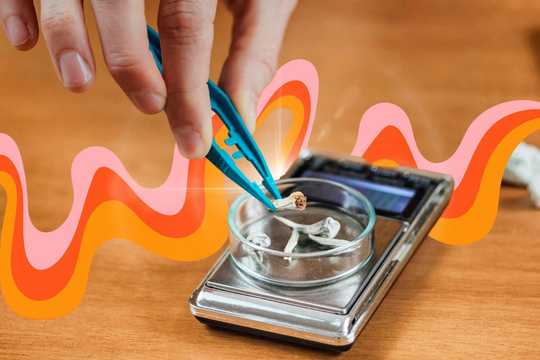An eating disorder is a medical condition that negatively affects a person’s physical functioning and social, mental, and emotional well-being. It is characterized by severe and chronic disturbances in eating habits and unhealthy thoughts and emotions about food.
Because the media and society often idealize thinness and normalize harmful eating habits, some might view eating disorders as a lifestyle or as a temporary phase that someone is going through. However, an eating disorder can have serious, life-threatening consequences including death. Other detrimental health effects include heart failure, intestinal obstruction, anemia, and kidney failure.
Eating disorders typically develop during adolescence and young adulthood. Research has shown that genetics may increase a person’s risk for an eating disorder. However, it can affect people without a family history of the condition of any gender, age, race, ethnicity, sexual orientation, body shape, weight, or size.
According to the American Psychiatric Association (APA), it is estimated that 5% of the population is affected by eating disorders, most commonly among women between the ages of 12 and 35.
There are multiple types of eating disorders including binge eating disorder (BED), bulimia nervosa (BN), anorexia nervosa (AN), pica, avoidant restrictive food intake disorder (ARFID), other specified feeding and eating disorder (OSFED), and rumination disorder. This article provides an overview of the 3 most common types of eating disorders and their symptoms.
You can learn more by reading our eating disorders blog series:
Part 1: 3 Most Common Types of Eating Disorders
Part 2: Why Someone Who Looks Healthy May Have An Eating Disorder
Part 3: Disordered Eating Isn’t The Same as an Eating Disorder
Part 4: Psychedelics and Their Potential for Treating Eating Disorders
Binge Eating Disorder (BED)
According to the National Institute of Mental Health (NIMH), binge eating disorder is the most common eating disorder in the US. BED is characterized by frequent and recurring episodes of consuming a large amount of food very rapidly while experiencing a lack of control in eating and feelings of disgust by the behavior.
It differs from bulimia nervosa because the person does not engage in compensatory behaviors such as forced vomiting, fasting, dieting, laxative use or excessive exercising after the binge episode. One of the requirements in a BED diagnosis is frequent binges; for instance, at least once a week for 3 months.
Other signs and symptoms of BED include:
- Eating a large amount of food during a discrete amount of time such as a 2-hour window
- Eating secretly or by themselves due to feeling ashamed and disgusted with the amount they are consuming
- Eating a lot of food even though they are not hungry
- Eating beyond feeling full, leading to discomfort and gastrointestinal problems
- Eating rapidly during binge episodes
- Feeling guilty, distressed and upset when thinking about their binge eating behavior
Individuals with BED tend to be overweight or obese. Binge foods typically include those that are highly processed and lack nutrients.
Therefore, the health implications of BED are associated with clinical obesity including a risk of developing cancer, hypertension, heart disease, mood disorders, type 2 diabetes, liver disease, dyslipidemia, stroke and reproductive issues.
Anorexia Nervosa (AN)
Most people think of anorexia nervosa when they think about eating disorders. It is the most well-known eating disorder type. AN is characterized by food avoidance, food restriction and self-starvation which leads to extreme weight loss, a fear of gaining weight and a distorted body image.
There are 2 subtypes of AN:
- Restrictive: Weight loss is mainly achieved through fasting, restrictive diets, limiting calories and/or exercising compulsively.
- Binging and Purging: In addition to limiting caloric intake, an individual will have binging and purging episodes which involve eating great portions of food in a very short period of time and then attempting to eliminate what was consumed through laxatives, diuretics and/or vomiting.
Someone with AN may view themselves as overweight even when they are severely underweight.
Other symptoms of AN include:
- Emaciated or very thin appearance
- Only consuming small amounts of food or certain foods
- Obsession with being thin and refusal in maintaining a healthy weight
- Denial of low body weight
If the condition persists without immediate treatment, some of the following symptoms may occur:
- Depression
- Irritability
- Anxiety
- Difficulty concentrating
- Extreme fatigue and feeling tired all the time
- Absence of a menstrual period
- Intolerance to cold due to a drop in internal body temperature
- Brittle nails and hair
- Fainting or dizziness due to dehydration
- Yellowish dry skin
- Weak muscles, wasting
- Bone loss due to osteopenia or osteoporosis
- Stress fractures due to extreme exercise
- Severe constipation
- Anemia
- Heartburn and reflux in those who vomit
- Lanugo (growth of fine hair all over the body)
- Heart damage
- Brain damage
- Infertility
- Multiorgan failure
AN is a very serious condition; it has the highest death rate of any psychiatric diagnosis, excluding opioid use disorder.
Bulimia Nervosa (BN)
People with bulimia nervosa will have recurrent alternating episodes of uncontrollable consumption of an excessive amount of food in a short duration followed by compensatory behaviors such as forcing themselves to vomit, fasting, overexercising, and/or using laxatives or diuretics.
Binging is done in secret as the person feels ashamed and embarrassed about their behavior. After binging, the person will feel very uncomfortable, nauseous and guilty as they have overeaten. A person with bulimia nervosa may be underweight, normal weight, overweight or obese.
Because they hide their behaviors and may not physically appear underweight, it is very challenging for friends and family to recognize that their loved one has bulimia nervosa.
Some common signs and symptoms of BN include:
- Acid reflux
- Gastrointestinal issues from laxative use
- A sore throat that never goes away
- Decaying and sensitive teeth due to constant stomach acid exposure and deterioration of tooth enamel
- Dehydration due to compensatory behaviors, causing issues such as dizziness, fainting and electrolyte imbalances
- Swelling of salivary glands in the cheeks, jaw and neck area
- Going to the restroom often following a meal
- Frequent diarrhea without physical cause or explanation
- The disappearance of great amounts of food from the fridge and/or pantry
- Unexplained food wrappers and containers
Although rare, BN can lead to life-threatening complications that require immediate medical attention including gastric rupture, cardiac arrhythmias and esophageal tears.
Eating disorders can be treatable with appropriate professional help and medical care. It is crucial for someone who shows signs of an eating disorder to seek treatment as early as possible because it increases the likelihood of recovery. Treatment options include psychotherapy, nutritional counseling, medical care and monitoring and medications.
If you or someone you care about may be struggling with an eating disorder, contact the National Eating Disorders Association (NEDA) Helpline for support, resources, and treatment options at 1–800–931–2237. They have text, online chat and phone call options.
Follow your Curiosity
Sign up to receive our free psychedelic courses, 45 page eBook, and special offers delivered to your inbox.References
Guarda, A. (2021, March). What Are Eating Disorders? Psychiatry.org; American Psychiatric Association. Retrieved from https://www.psychiatry.org/patients-families/eating-disorders/what-are-eating-disorders
Ioannis Kyrou, Randeva, H. S., Constantine Tsigos, Grigorios Kaltsas, & Weickert, M. O. (2018, January 11). Clinical Problems Caused by Obesity. Nih.gov; MDText.com, Inc. Retrieved from https://www.ncbi.nlm.nih.gov/books/NBK278973/
National Eating Disorders Association. (2018a, February 22). Binge Eating Disorder. National Eating Disorders Association. Retrieved from https://www.nationaleatingdisorders.org/learn/by-eating-disorder/bed
National Eating Disorders Association. (2018b, February 22). Bulimia nervosa. National Eating Disorders Association. Retrieved from https://www.nationaleatingdisorders.org/learn/by-eating-disorder/bulimia
National Eating Disorders Association. (2018c, February 22). Health Consequences. National Eating Disorders Association. Retrieved from https://www.nationaleatingdisorders.org/health-consequences
National Eating Disorders Association. (2018d, August 7). What are Eating Disorders? National Eating Disorders Association. Retrieved from https://www.nationaleatingdisorders.org/what-are-eating-disorders
National Institute of Mental Health. (2016, February). Eating Disorders. www.nimh.nih.gov. Retrieved from https://www.nimh.nih.gov/health/topics/eating-disorders







